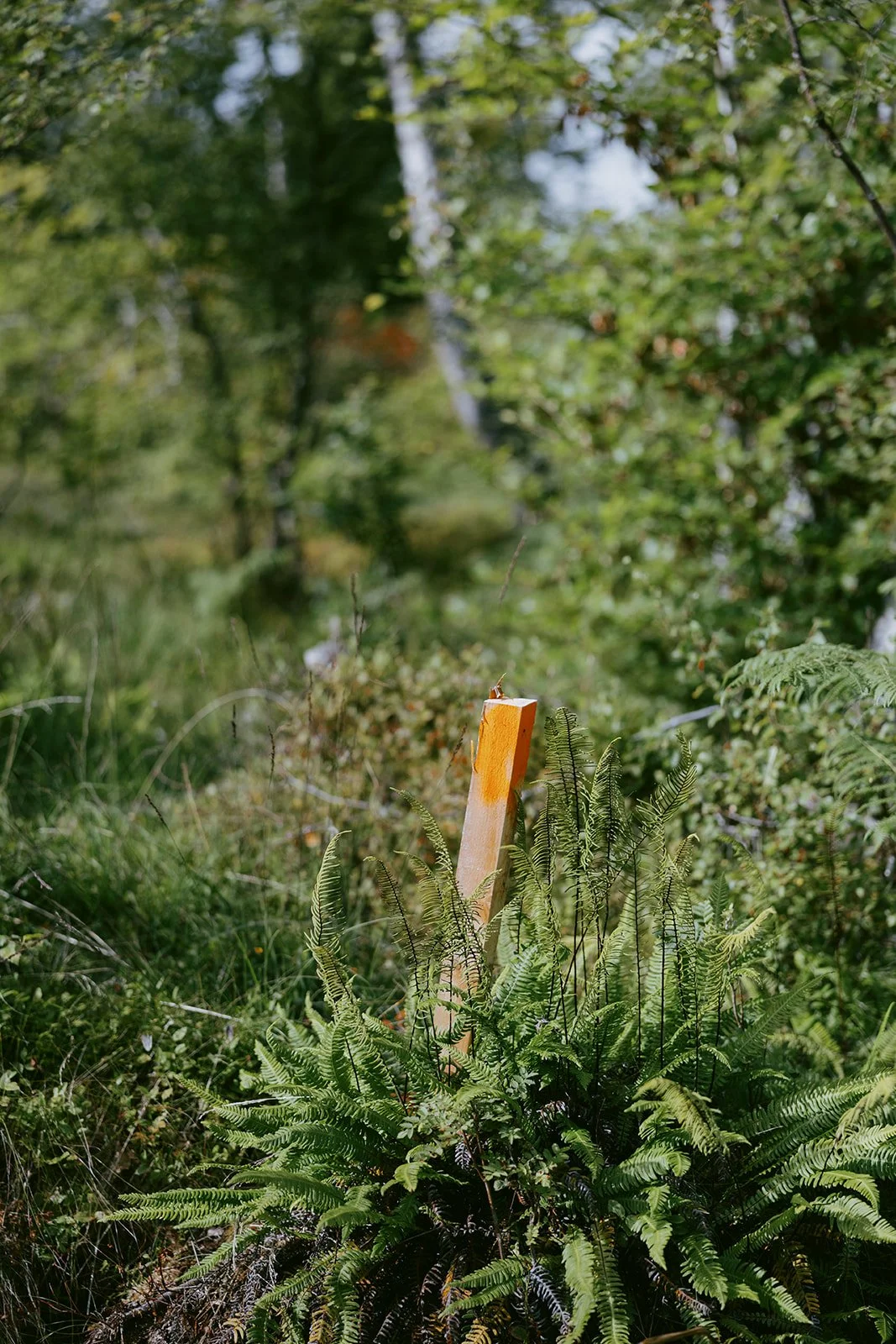On changing little
A house in the woods.
Occasionally, building requires a setting to be created, or a site to be transformed. In other cases, there’s an overwhelming sense that the less changed or manipulated, the better. Our ongoing project, for a new family home in a regenerating woodland, is a case where the latter applies.
Of the several places considered to position the new house, the site chosen is deepest in the woods, surrounded by stands of tall, slim trees. Clearings were formed when a crop of commercial firs was removed some years ago, leaving behind these strange stick-like birches, which had been reaching up to the light like spring shoots through an overly dense canopy. The land - 7 acres or so - is a ‘woodland croft’ but other than commercial tree felling, has not been worked in many years. It’ll soon be home to a young family, alongside a handful of rare breed pigs, working their way through the congested brush.
We felt strongly that a new house in this landscape should resist any sense of suburbanisation. A new track winds through the trees, carefully avoiding removal of healthy specimens. The house doesn’t need a sinuous organic form, or a structure which feels light and temporary. The building is simple and geometric. It’s defined and contained, while everything beyond its courtyard garden remains biodiverse wildwood, steered by light-handed agroforestry.
There are many constraints around building on woodland sites, for good reason. Planning consents don’t come easy, but with a carefully developed strategy, and an appropriate sensitivity towards both building and woodland, we’ve been able to secure approvals.



